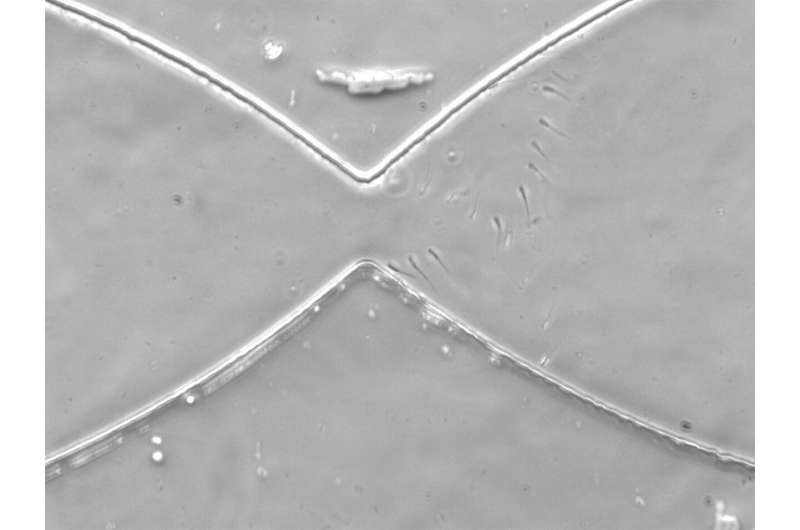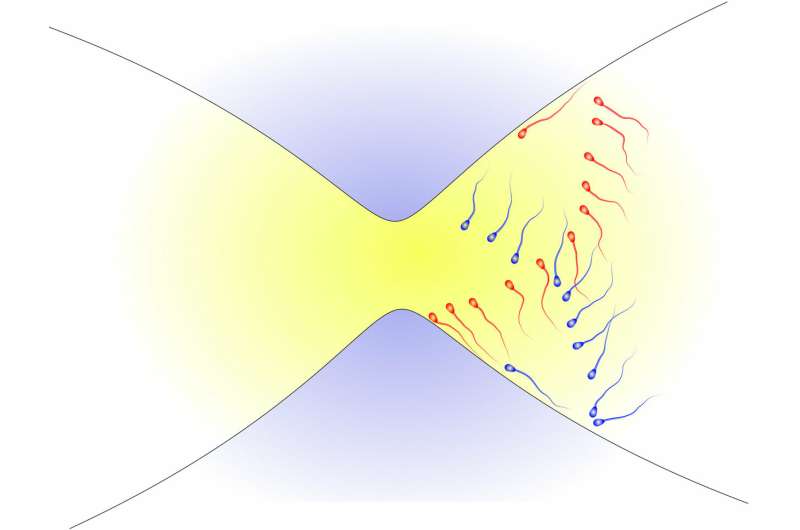February 14, 2019 report
Study suggests female reproductive tract may have evolved to favor faster swimming sperm

Bob Yirka
news contributor

A trio of researchers with Cornell University and Weill Cornell Medicine has found evidence that the female reproductive tract may have evolved to favor faster-swimming sperm. In their paper published in the journal Science Advances, Meisam Zaferani, Gianpiero Palermo and Alireza Abbaspourrad describe their study of human and bull sperm swimming in artificial devices and what they found.
Medical researchers have long suspected that there are features of the female anatomy that favor faster-swimming sperm—though there is no evidence that faster swimming sperm offer any genetic advantages over their slower colleagues. Still, scientists would like to know if this is the case, because it might provide hope to men who wish to conceive but have slow swimmers (low motility).
To learn more about the success rates of slow- versus fast-swimming sperm, the researchers built a device to mimic some of the more intricate parts of the female reproductive tract. They note that similar studies in the past have tested sperm swimming in ways similar to testing human swimming—by testing them in a straight-line course from beginning to end. The researchers note that the female reproductive tracts is anything but straight and it also has obstacles—like for instance strictures, which are parts of a tract that narrow. When a fluid moves from a wide channel to a narrow channel, it speeds up. Inside the female reproductive tract, there are fluids that are always on the move, thus, sperm need to swim upstream the whole time. When they reach a stricture, the going gets even more difficult.
The researchers noted that when swimming through their device, the sperm tended to congregate in a butterfly shape when approaching a stricture, with the faster swimmers at the front. That gave them an earlier go at the stricture. Additionally, they found that as the faster swimmers up front made their way to the stricture, they were repelled by the fast-moving fluid. But in being repelled, they were pushed against the walls of the structure leading to the stricture in which the fluid was not moving as fast. That gave them an easier passage and a leg up in reaching the egg and implanting before the slower sperm could catch up.

Written for you by our author —this article is the result of careful human work. We rely on readers like you to keep independent science journalism alive. If this reporting matters to you, please consider a (especially monthly). You'll get an ad-free account as a thank-you.
Journal information: Science Advances
© 2019 Science X Network
















